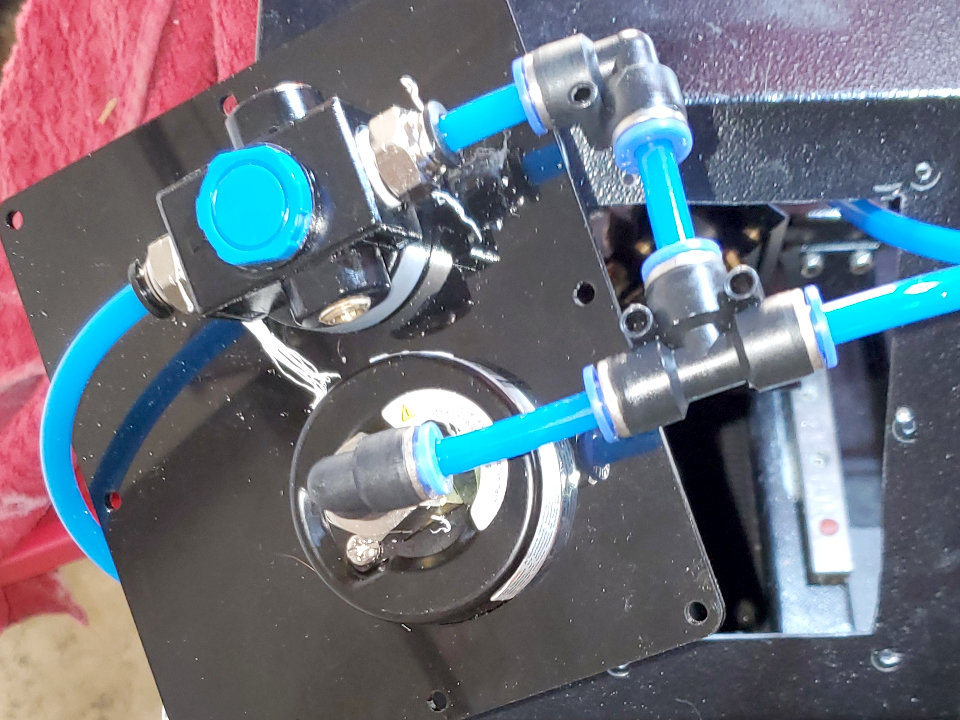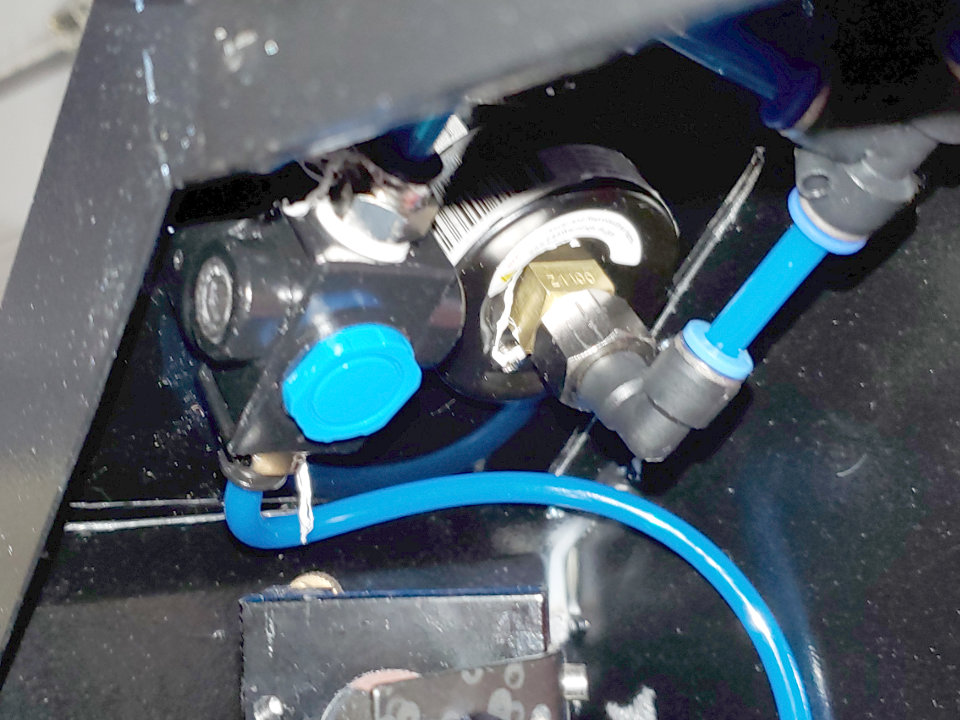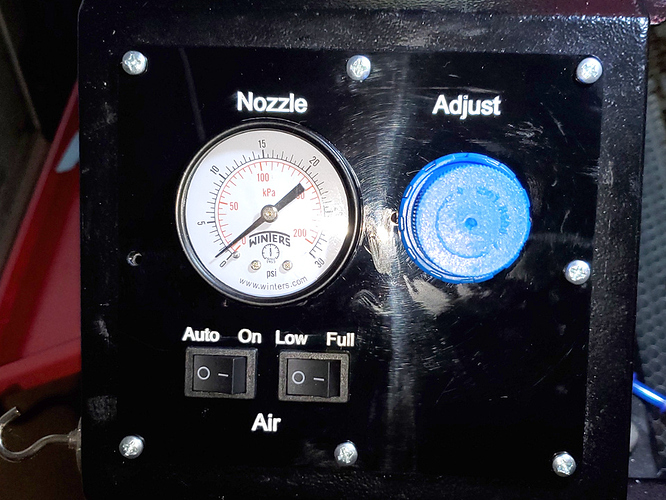The MK1 version is just the solenoid, some ice maker and pipe fittings and a diode.
The MK2 version just expanded on it.
Don’t really have a list. The solenoids are AirTac 3C208NCBT, there are three variations of the 3V208NC depending on your part of the world and pipe thread connection needed. Order correctly.
The pipe / push Tee’s are from WW Grainger, 36W772. They are not on the web site catalog, I had to go to the chat and get one of their people to look them up. Once you have the part number you can order them just like any other fitting.
The regulator and gauge combo’s were the smallest and cheapest I could find at Harbor Freight.
The input 90 degree push to pipe behind the incoming solenoid and the blue bypass valve at the top are ice maker fittings.
The terminal strip was left over from another project, and the wire is thermostat wire. It had enough conductors and different colors to let me keep track of everything.
Pipe plugs for the bypass ports, and a couple of close nipples and teflon tape between regulators and solenoids and that’s about it.
Some items not seen in the picture. The air assist terminal from my controller goes up to a small SPDT rocker switch on my control panel for high / low selection before going back down to feed either of the top two solenoids. I also have a large number 30 psi pressure gauge Tee’d into the line at the machine that sits by the control console, picked it up in the ag sprayer department at Tractor Supply. Each solenoid has a diode across it’s terminals to prevent back feed to the other solenoids, and another between air assist and status to prevent back feed when only the main solenoid is called for.
The solenoids are really the only ‘special’ part in that they will operate with no air pressure, so I can go back to my little diaphragm pump in an emergency. Most air solenoids require a minimum air pressure to operate and would not be able to do that. The bulkhead Tee’s took a bit to track down, but are a fairly common fitting.
Off the top of my head, I would say I have around $125 USD invested, maybe $150. That’s a guess because most of the regular pipe fittings and such came from my spare parts drawers. The wire and terminal strip were both leftovers as well. The terminal strip was part of a package of five twelve position strips I ordered off of Amazon,
I also have a SPST switch as an over ride to the controller air assist.








